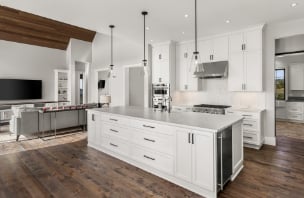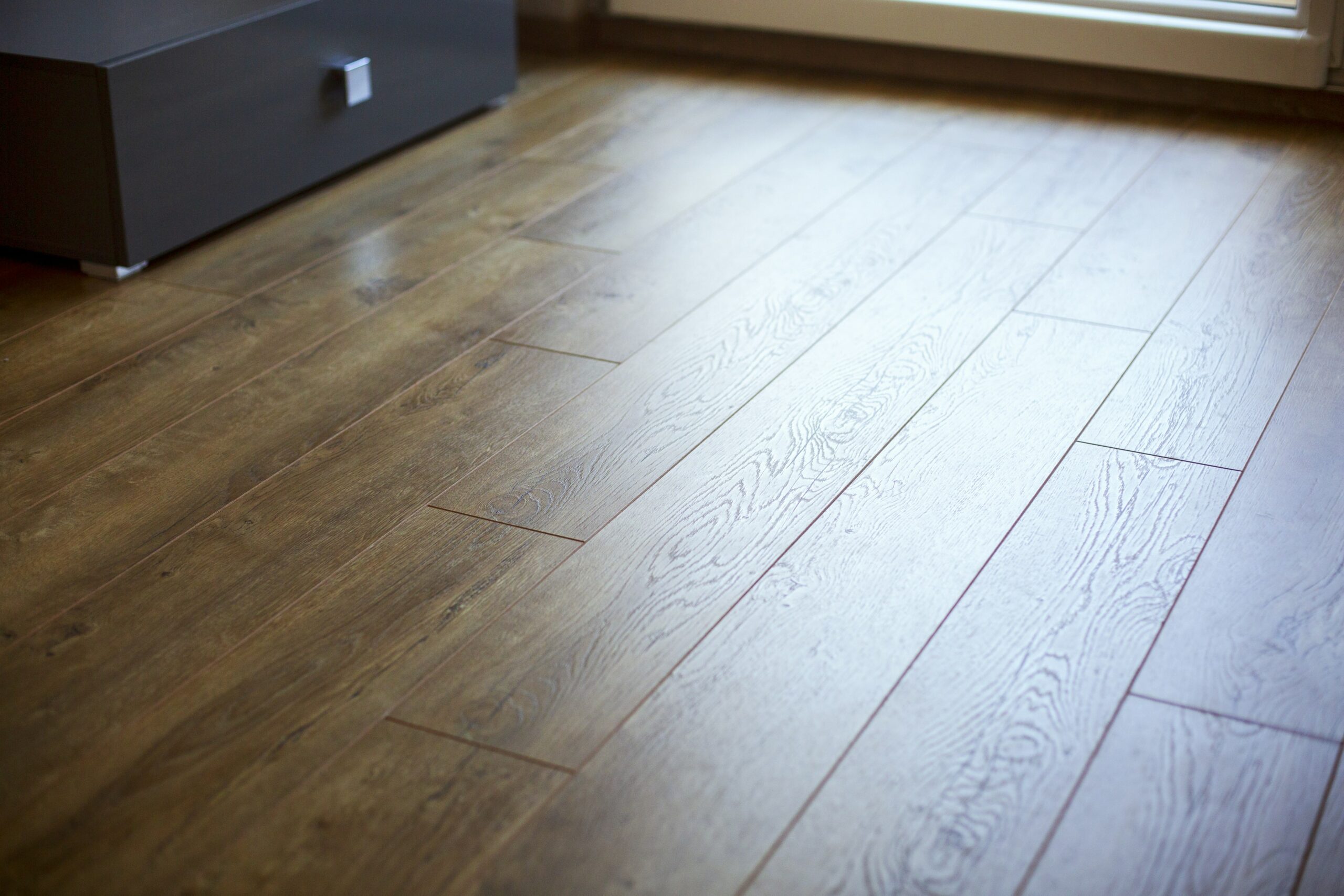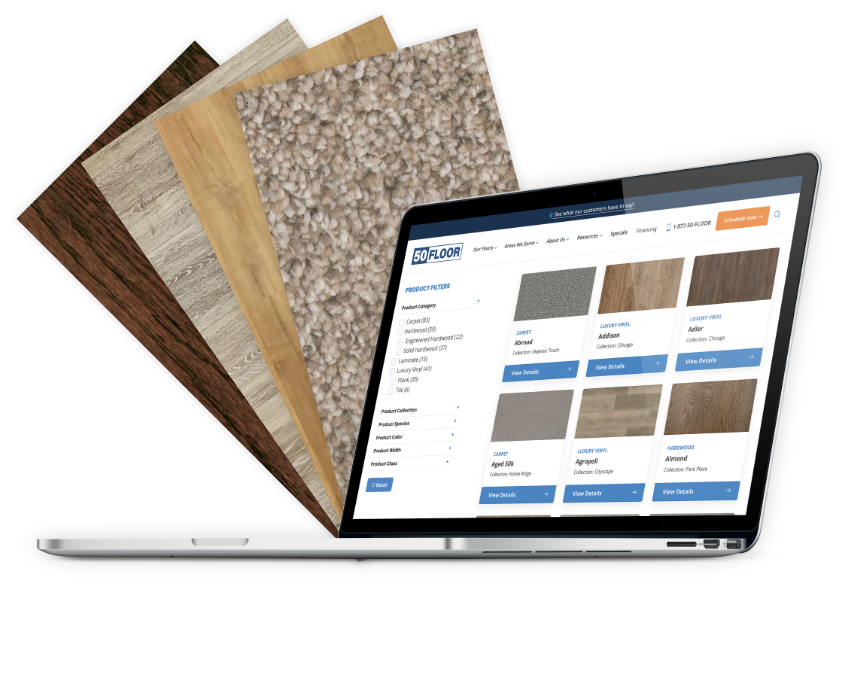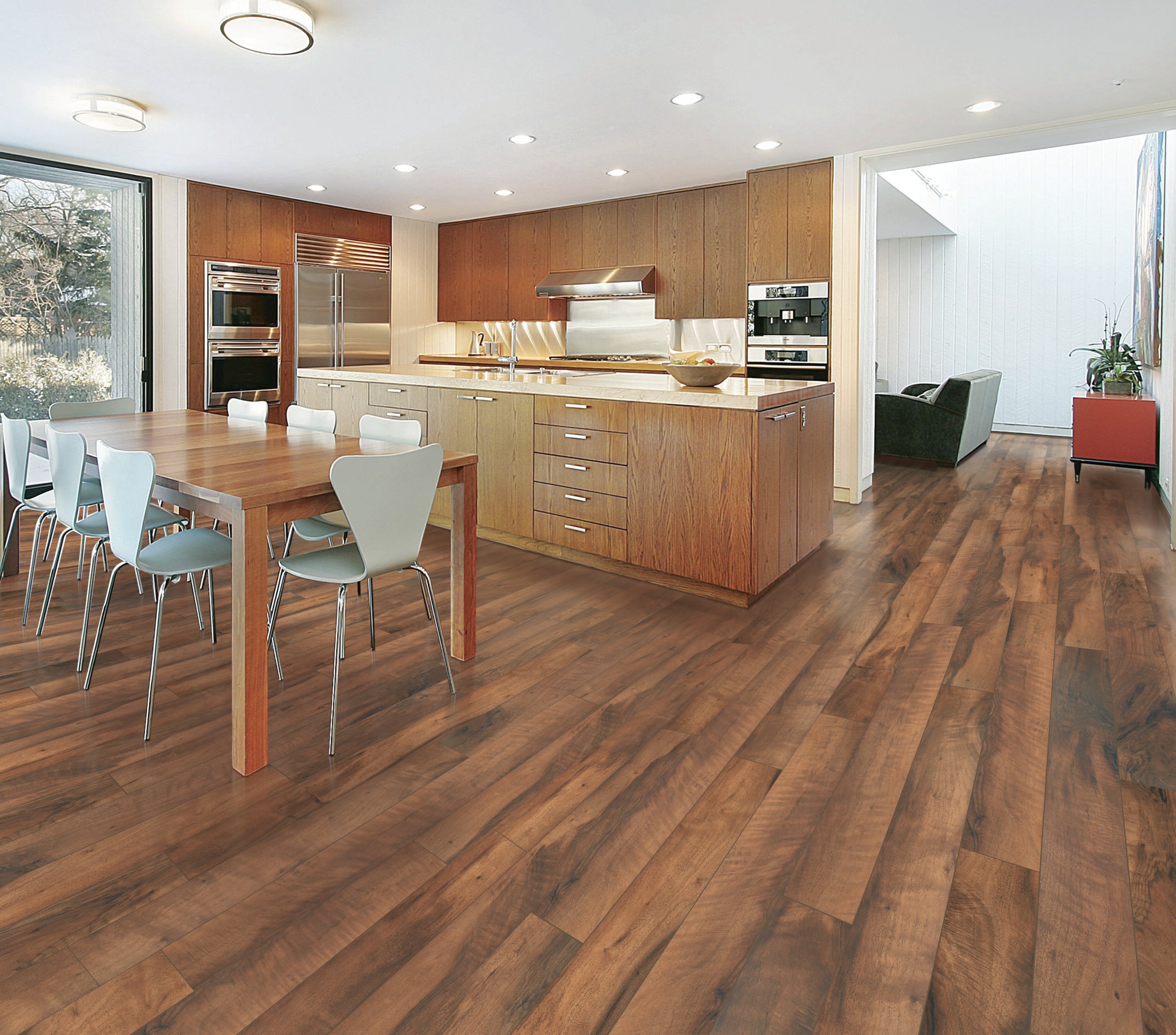Laminate flooring is made up of many layers of compressed wood particles, making it resistant to water.
While this layering system provides strength and protection against everyday use, it is not completely waterproof. Exposure to water or moisture could cause the edges of the laminate planks to swell, ultimately resulting in damage to the floor.


Laminate Overview
Laminate flooring is a synthetic flooring material designed to replicate the look of hardwood, stone, or other natural materials.
It is made up of multiple layers, each serving a specific purpose. These layers are fused together through a process known as lamination, hence the name “laminate flooring.”
The laminate floor’s composition usually consists of:
Wear Layer
This top layer keeps your flooring looking fresh and new. It can vary in thickness, with higher quality laminates typically having a thicker wear layer.
The wear layer is also important for maintaining a floor’s slip resistance, as well as its resistance to moisture and stains. A transparent protective layer that protects the flooring from scratches, stains, and wear.


Design Layer
A high-resolution printed layer that gives the flooring its realistic appearance.
This is what sets laminates apart from other types of flooring. Thanks to advanced printing techniques, the design layer can mimic wood, stone, and even metal. The higher the layer’s quality, the more realistic and vibrant the design will appear.
Core Layer
High-density fiberboard (HDF) or medium-density fiberboard (MDF) provides structural stability and support.
The core layer is the heart of the laminate flooring, providing its structural integrity. It determines how the floor feels underfoot, as well as its resistance to denting or buckling. A dense core layer also helps dampen sound and absorb impact.
Backing Layer
A moisture-resistant layer that helps protect the flooring from warping due to moisture.
This moisture-resistant layer is essential to the overall lifespan and function of your laminate floor. It protects the core from moisture damage, which can lead to warping, delamination, or other issues.




Laminate vs. Water
Laminate flooring is not completely waterproof, but it does offer a level of water resistance.
- Spills: Laminate flooring can usually handle small spills quite well, as long as you deal with them immediately. Removing the moisture will help prevent it from penetrating the floor’s seams.
- Prolonged Moisture: Areas with high humidity or constant moisture, such as bathrooms or basements, can be detrimental to the laminate floor (swell, warp, or even separate).
- Flooding: Water can seep into the seams and cause the flooring to expand, warp, or separate. In such cases, the affected areas will likely need replacement.
Types of Waterproof Laminate
Fully Waterproof Laminate
Fully waterproof laminate is designed to withstand water exposure without incurring damage. It is ideal for areas in your home where water spills or moisture are common, such as kitchens, bathrooms, or basements.
Some popular features of fully waterproof laminate include:
- Hydrophobic coating: This special surface treatment repels water and prevents it from penetrating the material.
- Tight locking system: The planks interlock tightly, minimizing the gaps where water can seep through.
- High-quality core: A dense, water-resistant core enhances the overall durability and water resistance of the laminate.
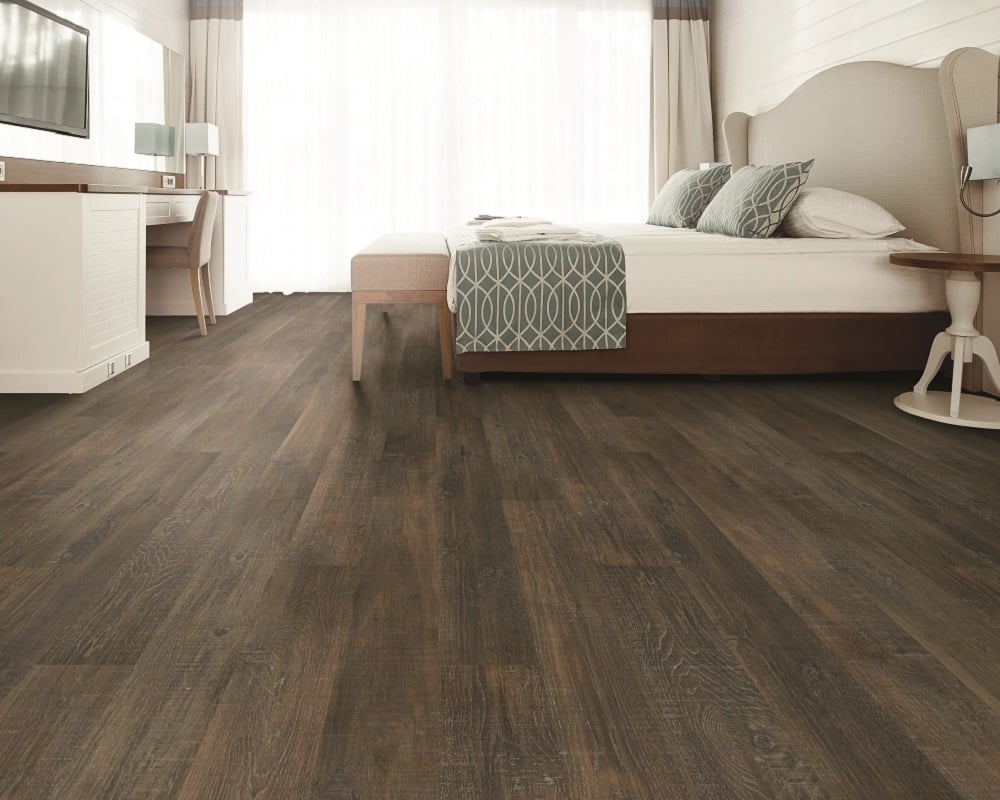

Water-Resistant Laminate
Water-resistant laminate can handle small amounts of water exposure without significant damage. However, it is not recommended for rooms where prolonged or heavy water exposure is expected.
Here are some features of water-resistant laminate:
- Treated top layer: A water-resistant surface treatment helps protect the laminate from minor spills and splashes.
- Resistant core: The core of water-resistant laminate is designed to withstand limited moisture exposure.
- Moisture barrier underlay: Installing an additional moisture barrier under the laminate can further enhance its water-resistant properties.


Maintenance and Care
Regular Cleaning
- Sweep regularly: Use a soft-bristle broom or a vacuum cleaner (without a beater bar) to remove dirt and dust.
- Clean spills immediately: Wipe up spills to avoid water damage. Never use a wet mop, as this can cause the laminate to swell.
- Use proper cleaning products: Avoid using abrasive cleaners, wax, or polish. Use a cleaner made for laminate flooring instead.


Preventive Measures
To further protect your laminate floors and prolong their lifespan, consider these preventive measures:
- Place mats at entrances to collect dirt and moisture before they make it to your floors.
- Add felt pads or rubber cups under furniture legs to prevent scratches and dents.
- Keep humidity levels in your home between 35-55% to minimize the risk of water damage.
- If you have pets, keep their nails trimmed and clean up any accidents.


GET INSPIRED
Flooring to MATCH YOUR STYLE
How to Choose the Right Laminate Floor
Choose Which Room to Install the Floor In
Choose which room(s) you plan to install laminate flooring in. This helps narrow down your options, as some types are built for specific purposes (e.g., waterproof laminate for bathrooms).
AC Ratings
Laminate floors are categorized by their Abrasion Class (AC) ratings, which range from AC1 (light residential use) to AC5 (heavy commercial use).
Choose a rating that aligns with your room’s foot traffic.
| AC Rating | Recommended Use |
| AC1 | Bedrooms, guest rooms |
| AC2 | Dining rooms, living rooms |
| AC3 | Home offices, hallway |
| AC4 | Commercial spaces, restaurants |
| AC5 | Heavy commercial use |
- Thickness: Thicker laminate (usually 10mm to 12mm) provides better noise reduction, insulation, and durability. Thinner laminate (6mm to 8mm) is budget-friendly and easier to install but may feel less sturdy underfoot.
- Texture and Finish: Choose from various textures and finishes to mimic the look of real wood (smooth, hand-scraped, or embossed) or go for high shine laminate for a glossy, modern style. Don’t forget to order samples to compare against your room’s lighting and décor.
- Budget: Laminate flooring can range in price from $1 to $12 per square foot, so factor in your budget when narrowing down your options. Keep in mind that additional costs may arise from underlayment, moldings, and installation.



